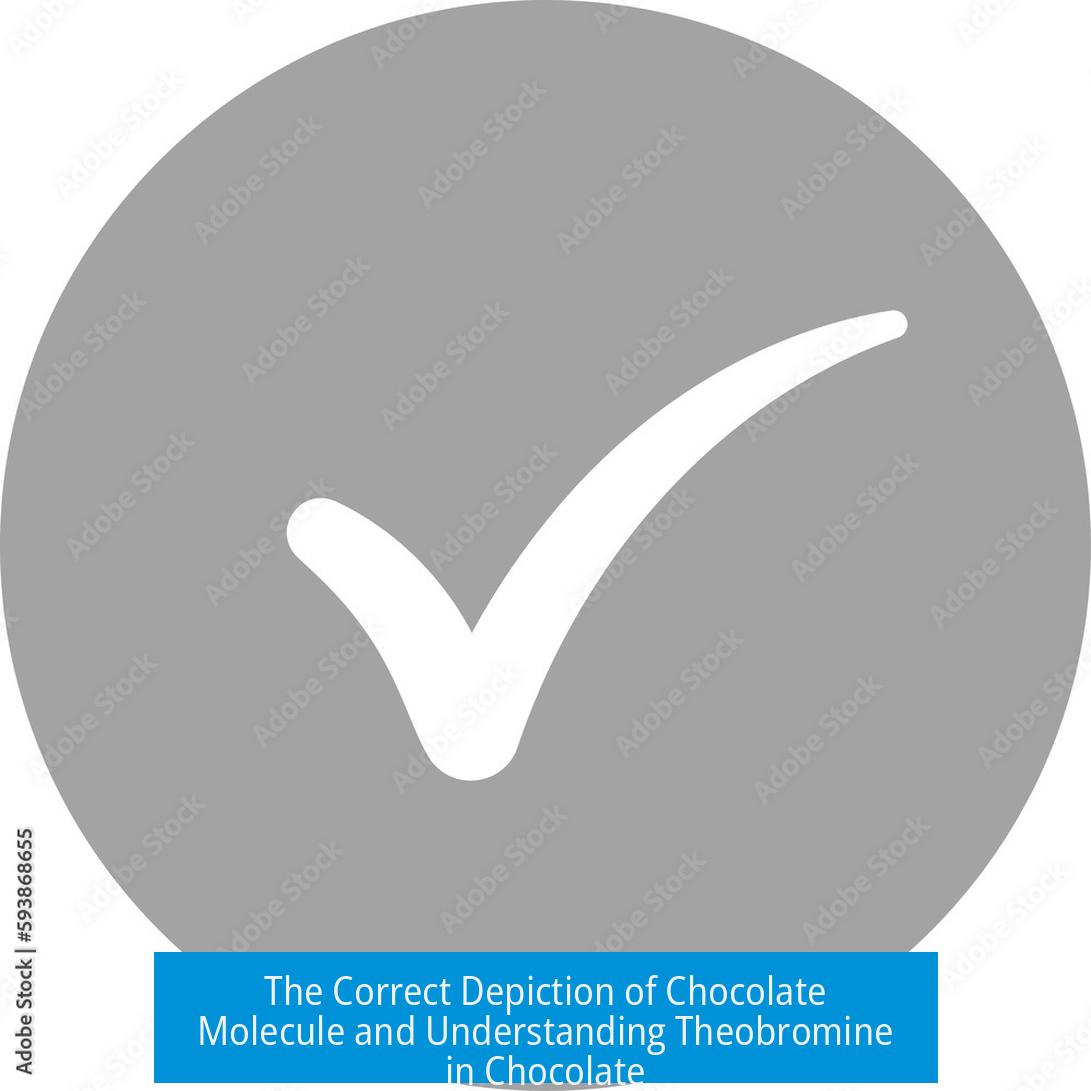Understanding the Correct Depiction of a Chocolate Molecule
There is no single “chocolate molecule” because chocolate is a complex mixture of many compounds. The molecule most commonly referenced as the “chocolate molecule” is theobromine. Different visual representations of theobromine vary only in how certain groups, such as methyl groups (–CH3), are illustrated, but both are correct depictions of the same molecule.
Chocolate: A Mixture, Not a Molecule
Chocolate is not a single chemical entity but a heterogeneous mixture of numerous compounds. These include a variety of molecules such as sugars, fats, caffeine, phenylethylamine, and alkaloids like theobromine. The term “chocolate molecule” is scientifically incorrect because it implies a unique, identifiable molecule representing chocolate. Instead, chocolate’s flavor, texture, and physiological effects arise from the combined presence of these chemicals in varying ratios.
Theobromine: The Most Recognized Molecule in Chocolate
Theobromine is an alkaloid found in cacao beans, the source of chocolate. It belongs to the methylxanthine class, closely related to caffeine. Theobromine is often presented as the “chocolate molecule” in educational and popular contexts due to its significant presence and biological effects. However, it is one of many compounds contributing to chocolate’s characteristic profile.
- Chemical Origin: Its name derives from Theobroma, the genus of the cacao tree. “Theo” means “god,” and “broma” means “food” in Greek.
- Toxicity: Theobromine is toxic to dogs and cats, causing overstimulation of their central nervous systems; for dogs, the lethal dose can be 250–500 mg/kg.
- Pharmacology: It has a longer half-life in dogs (approximately 18 hours) compared to caffeine (4.5 hours), leading to prolonged toxicity effects.
Two Depictions of Theobromine: What’s the Difference?
When shown in diagrams, theobromine may be represented in multiple ways. The most common difference lies in how methyl groups (–CH3) are depicted:
| Depiction Style | Description | Utility |
|---|---|---|
| Skeletal Formula Without Explicit Methyl Labels | Carbon atoms and attached hydrogens are implied; terminal lines without labels represent methyl groups. | Quicker and simpler to draw; preferred for routine structural representation. |
| Skeletal Formula With Explicit –CH3 Labels | Methyl groups are labeled explicitly to prevent ambiguity. | Useful when highlighting reactive sites or for educational clarity; aesthetically preferred in specific contexts like tattoos or art. |
Both depictions are chemically identical and valid. The choice depends on the desired clarity, context, and purpose of illustration.
The Broader Chemical Landscape of Chocolate
Chocolate’s unique qualities arise from a blend of diverse molecules:
- Caffeine: Another methylxanthine present in chocolate, structurally similar to theobromine.
- Phenylethylamine: Associated with the mood-enhancing effects of chocolate.
- Sugars and Fats: Responsible for sweetness, texture, and mouthfeel.
- Other Flavor Compounds: Many volatile and non-volatile molecules contribute to chocolate’s aroma and taste.
Without this intricate combination, chocolate would lack its signature flavor and appeal.
Additional Facts About Theobromine
- Theobromine’s name is unrelated to bromine, the chemical element; it reflects the botanical origin.
- Although structurally similar to caffeine, theobromine differs by having one less methyl group.
- Pets should never consume chocolate due to their sensitivity to theobromine’s toxicity.
Key Takeaways
- Chocolate has no single molecule; it is a mixture of many chemical compounds.
- Theobromine is the compound most often referred to as the “chocolate molecule.”
- Multiple structural depictions of theobromine exist; differences are mainly about clarity in representing methyl groups.
- Both explicit and implicit methyl group notations are acceptable and correct.
- Other molecules like caffeine, sugars, and phenylethylamine contribute significantly to chocolate’s attributes.
1. Is there a single molecule that represents chocolate?
No. Chocolate is a complex mixture of many compounds, not one single molecule. There isn’t a single “chocolate molecule.” The flavor and properties come from various molecules combined.
2. What molecule is commonly shown as the “chocolate molecule”?
Theobromine is often shown as the “chocolate molecule.” It is one of the major compounds found in chocolate and linked to its effects, but it is not the only molecule present.
3. Are the two different depictions of theobromine actually different molecules?
They are the same molecule represented in different ways. One shows methyl groups explicitly as CH3, and the other uses lines to imply them. Both are correct and depict theobromine.
4. Why do some depictions show methyl groups explicitly while others do not?
Showing methyl groups (CH3) explicitly can help clarify chemical reactions or details. Omitted methyl groups are usually implied in standard skeletal formulas. It’s a matter of preference or purpose.
5. Does chocolate contain other important compounds besides theobromine?
Yes, chocolate includes caffeine, sugars, fats, and other chemicals like phenylethylamine. These contribute to chocolate’s flavor and texture, making it a complex mixture rather than a single compound.





Leave a Comment